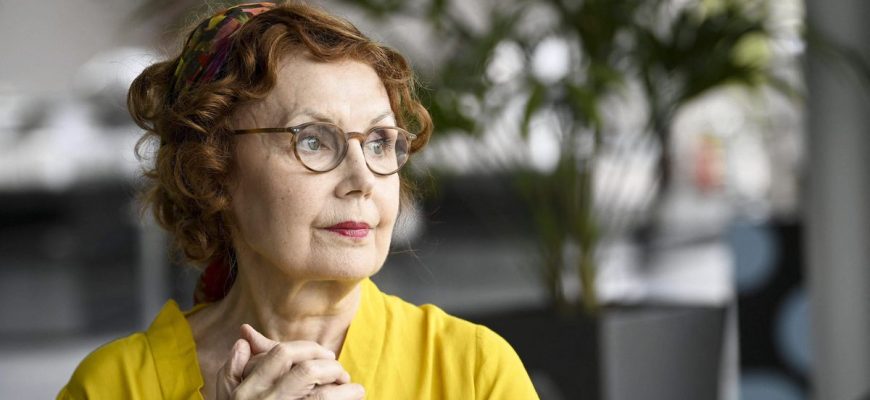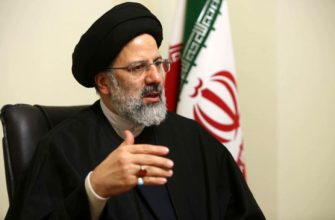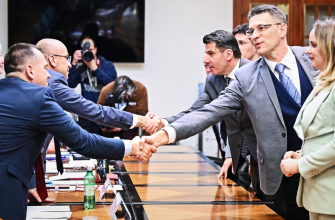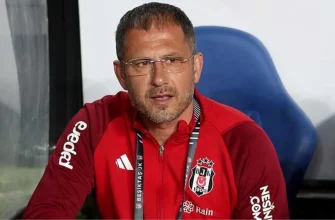There is something misleading about the truckload of superlatives that Kaija Saariaho has been pouring over her for years, and every one of which she deserves: the idea of the biggest and the best is not in keeping with her character and her music. That music is – just a superlative, you can’t escape it with Saariaho – a marvel of beauty and profundity, tentative and accurate, ingenious and self-evident, both raw and enchanting, never gratuitous and always new. She composed an oeuvre of operas, orchestral and chamber music that is already canonical and is credited with capitals in music history. Saariaho died Friday, at home in Paris, from the effects of a brain tumor. She was seventy years old.
Saariaho was born in Helsinki in 1952. She studied in her hometown and in Germany, where the austere specter of the post-war avant-garde was still very much alive in the 1970s. That did not suit Saariaho, and in 1980 she moved to Paris, attracted by the music of ‘spectralists’ Tristan Murail and Gérard Grisey. At the sonology institute IRCAM, founded by Pierre Boulez, she conducted research into electroacoustic composition and computer music. There she met the composer Jean-Baptiste Barrière, with whom she married and had a son and a daughter.
In the mid-1980s Saariaho emerged from anonymity with large ensemble pieces such as Blendings and Arcs of light. Characteristic is the original and innovative way in which she uses electronics: not in contrast to the acoustic music, but in line with it, as an extension of the sound possibilities, an aura of enchanting colours.
Modern classics
Saariaho quickly made a name for herself as a composer of ‘spectral music’, for which she made extensive computer analyzes of the overtone spectrum of acoustic sound and then used them as raw material for her compositions. Work like petalsfor cello and electronics, and Grail theatre, for violin and orchestra, are now modern classics. She also managed to translate the effect of the electro-acoustic arrangements into purely instrumental pieces, so that all her music has a characteristic dream-like quality.
But Saariaho’s real breakthrough came in 2000, with her first opera, L’amour de loin, directed by Peter Sellars, in which she combines lyricism and instrumental splendor with a flawless antenna for dramaturgy. Since the premiere at the Salzburger Festspiele is L’amour de loin performed many times, including at the Metropolitan Opera in New York, where it was only the second opera ever to be composed by a woman (the first being in 1903). The French-Lebanese writer Amin Maalouf signed for the libretto, just like with Adriana Matter (2006), The Passion of Simone (2006) and Emilie (2010), cementing Saariaho’s reputation as one of the foremost opera composers of our time.
Saariaho was a beloved and much-played composer worldwide, and that also applied to the Netherlands. She made the orchestral work for the Concertgebouw Orchestra circle folder, which premiered in 2012 in the Gashouder in Amsterdam. In 2020, Saariaho was supposed to be a festival composer at November Music in Den Bosch, but the entire festival was canceled at the last minute due to stricter corona measures. Saariaho said about the impact of the paralyzed music life and all cancellations NRC: “The music stays in my head until I hear it in real life. Now I walk around with a head full of unperformed music.” A year later, Saariaho could still be heard in November Music.
Shootout
The biggest work to suffer from the lockdowns was her last opera, Innocence. The long-awaited world premiere finally took place in the summer of 2021 at the festival of Aix-en-Provence. Innocenceabout a school shooting, was a resounding international success, “even more impressive than you might have hoped based on Saariaho’s previous operas,” says NRC. on October 8 Innocence at De Nationale Opera in Amsterdam its previously postponed Dutch premiere.
In February 2021, Saariaho was diagnosed with glioblastoma, an aggressive cancer that begins in the brain. She kept her illness private, though she did appear in public in a wheelchair. In her final months, Saariaho devoted herself to completing her trumpet concerto Hushfor trumpeter Verneri Pohjola, who will premiere it in Helsinki in August together with the Finnish Radio Symphony Orchestra and conductor Susanna Mälkki.

/s3/static.nrc.nl/images/gn4/stripped/data101337446-a9e22e.jpg)







